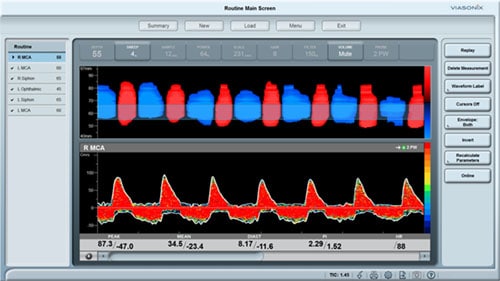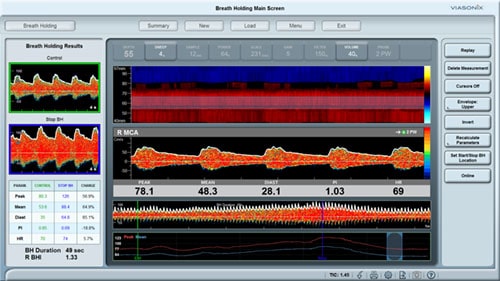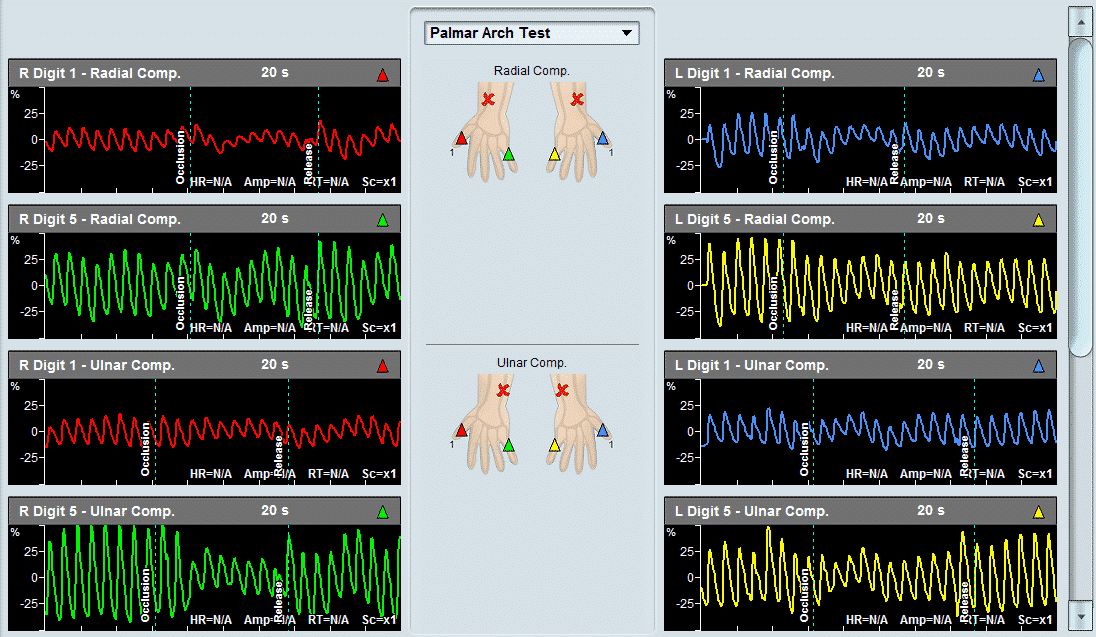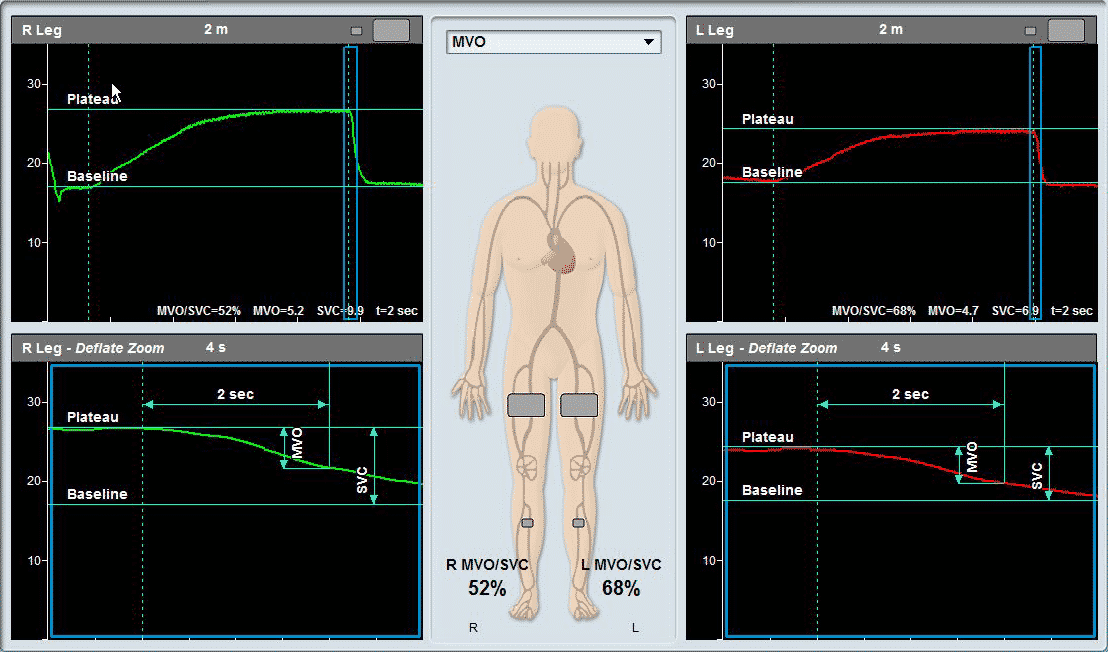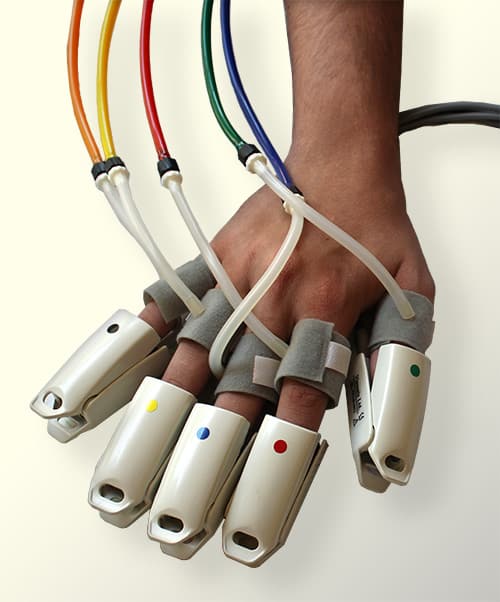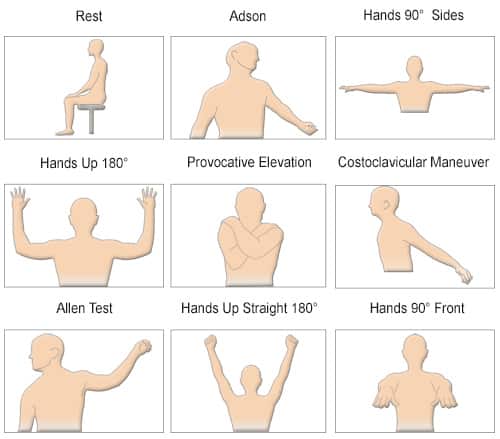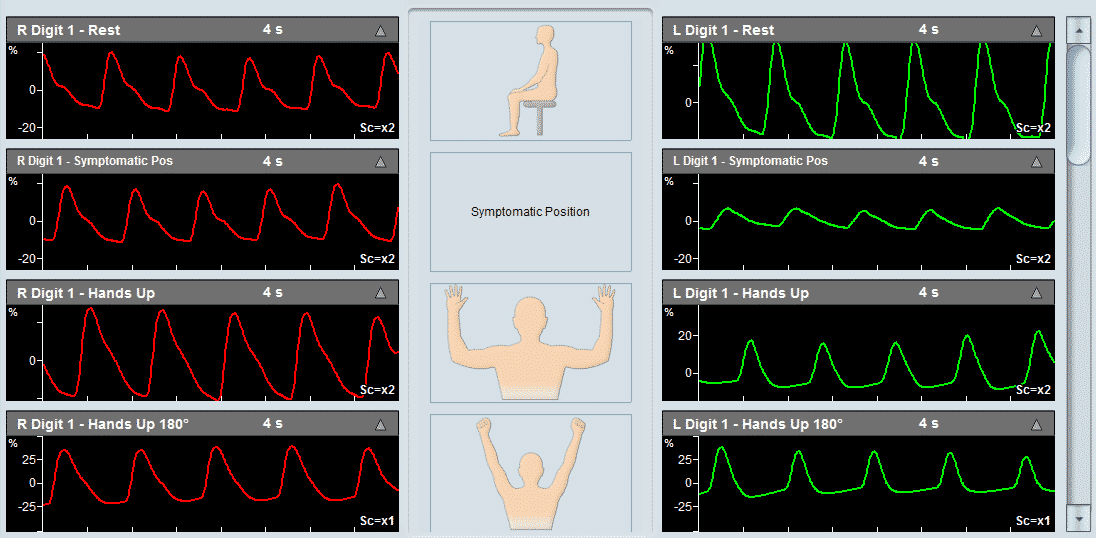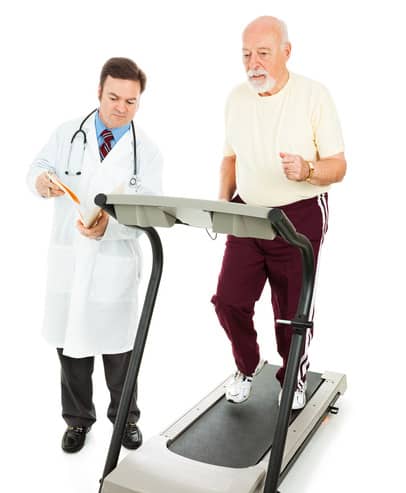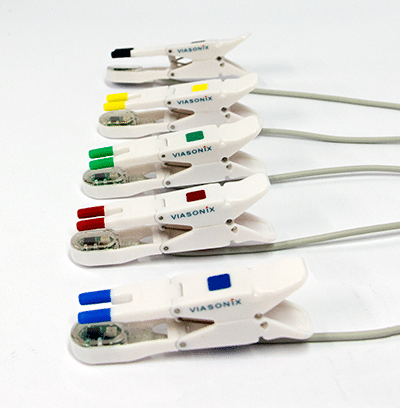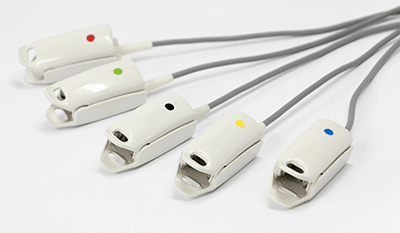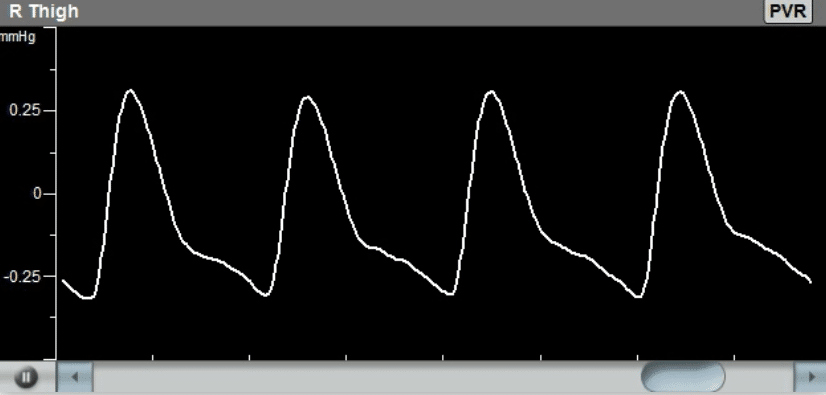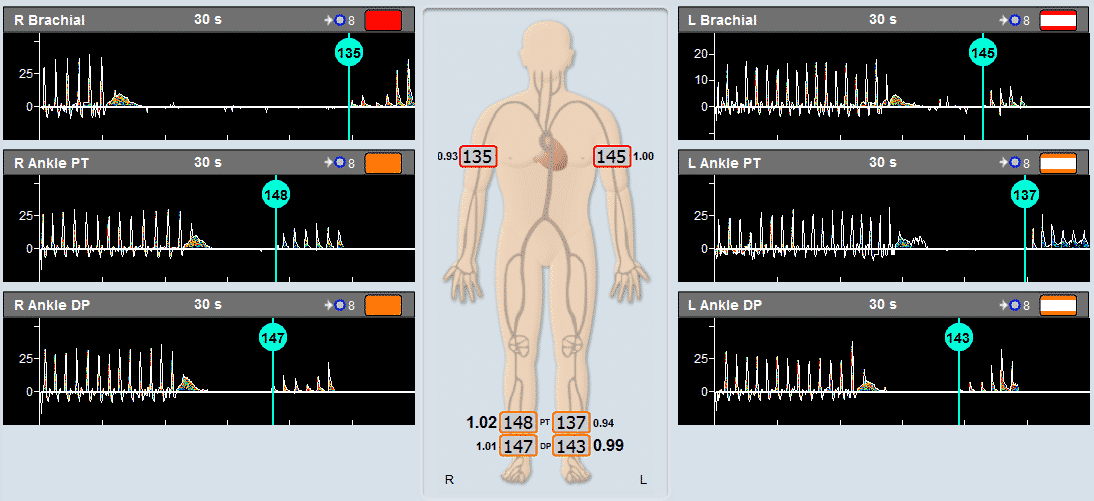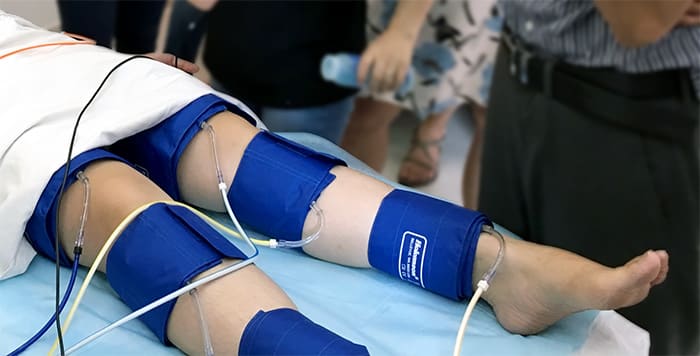What is Photo-Plethysmography?
Photo-plethysmography (PPG) sensors are vital in every physiological vascular testing examination.

The PPG sensors transmit infra-red waveforms to the skin and detect the signals that are reflected back to the sensor from the skin. The skin partially absorbs the transmitted signals, and the reflected signals are a function of this light absorption, which in turn is a function of the local blood perfusion. Therefore, the PPG waveforms reflect local and relatively shallow skin variations in blood flow.
The Photo-plethysmograph detected local blood volume changes generate a pulsatile waveform, which is very similar to the Pulse Volume Recording (PVR) waveforms. However, PPG is based on optical technology, while PVR technology is based on a pressure-sensor measurement.
How to Perform PPG Measurement
Examiners usually use PPG measurements as support adjunct measurements as part of other physiological tests such as TBI examinations, Venous Reflux test, TOS evaluation, Palmar Arch test, Raynaud’s examinations, and more.
Since the emitted infra-red light’s penetration is shallow, PPG sensors are mostly used in peripheral sites, such as the toes and digits. The sensors may have different mechanical configurations that will allow to place them on the target measurement sites in a simple manner.

PPG Disc
For venous reflux and TBI
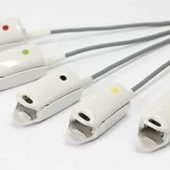
PPG Finger Clips
Ideal for Raynaud’s Syndrome
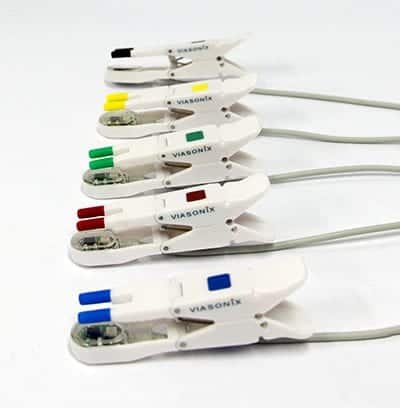
PPG Toe Clips
Variety of uses including ABI & TBI
Using the Falcon for PPG Readings
The Falcon/Pro supports 5 independent and color-coded PPG ports, and the Falcon/Quad and Falcon/ABI+ models support 4 independent and color-coded PPG ports. The Falcon has several PPG sensor configurations that are designed to meet the various potential measurement sites. These configurations include:
- Toe Clip PPG sensor design, which is optimal for PPG measurements on the toes.
- Finger Clip design, which is ideal for measurements on the digits (fingers).
- Disk PPG sensor design, which is attached to the skin with a special dedicated PPG adhesive sticker. It is practical for measurements on the calf or the tip of the toes, or other similar peripheral sites.
These different designs support the various physiological testing protocols that are supported by the Falcon. The Finger Clip or Toe Clip sensors allow simultaneous measurements on all 5 fingers or toes for quick Raynaud’s assessment, Thoracic Outlet Syndrome (TOS) diagnosis, Palmar Arch testing, and of course also TBI (Toe Brachial Index) or similar studies. The Disk sensor is advantageous in Venous Reflux testing or TBI measurements, particularly on fat or short toes.
The Falcon photoplethysmography system allows complete control over the display sweep time of the waveforms from just 1 second and up to several minutes, control of the amplitude display scale, signal filtering, and sensor port selection. These unique features allow complete configuration per examiner needs.
In addition, for each phasic waveform, the PPG amplitude and systolic rise time are presented, as well as the current heart rate (HR). Dedicated summary screens with schematic pictures allow complete and simple test assessments for clear and optimal diagnosis and are also included in the test reports.
Expected Results
PPG measurements are widely used in various physiological test protocols, and in most cases, the main objective is to qualitatively diagnose changes in waveform quality or amplitude under specific conditions. For example, a sharp decrease in waveform amplitude during a TOS test when testing a particular position, a flattening of the PPG curve during vessel compression as part of the Palmar Arch test, or a very long recovery time after ice water immersion during a Raynaud’s Syndrome examination.
In addition, PPG waveforms help to determine systolic blood pressure during TBI or ABI diagnosis. A proximal pressure cuff is inflated until the distal PPG waveform flattens with total occlusion. Then, during the cuff deflation process, the pressure at which the PPG waveform reappears for the first time is considered as the systolic blood pressure at the measurement site.

